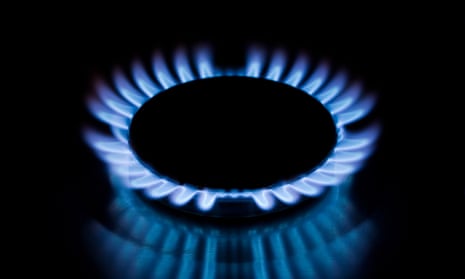It’s not what you know but who you know. To prove the aphorism, compare the response to Theresa May’s promise to cap energy bills, and the furore over Ed Miliband’s pledge to do something very similar four years ago.
When the former Labour leader called for a 20-month price freeze in the face of rising gas and electricity costs, he was ridiculed. “Back to the bad old days,” screamed the Daily Mail front page in September 2013.
But when the Mail, edited by Paul Dacre, a May supporter, reported earlier this month on Tory plans to take action on bills in the face of the latest rise by one of the big six energy companies, such statist intervention had become a “crackdown on energy rip-offs”.
The Telegraph said prices would go up before Miliband’s freeze, while the Times and the Sun warned the “lurch to the left” risked blackouts. The Times’s editorial described his plan as “flawed in practically every detail”. On Sunday, the Sunday Times welcomed May’s price cap as an “attempt to capture the political centre ground”.
The hypocrisy is not lost on the Labour MP, who tweeted: “Where were these people for last four years since I proposed cap? Defending a broken energy market that ripped people off. Let’s see small print.”
As well as powerful media allies, May also has luck on her side. Miliband’s eye-catching pledge came a few months before wholesale energy prices began a two-year slide, rendering the idea irrelevant.
The regulator, Ofgem, acknowledges that costs to suppliers are creeping back up, but said the increases did not warrant the level of hikes that the big six – British Gas excepted – have pushed through on millions of customers in recent months.
May appears to have chosen what has been described as the “full fat” choice, a cap on the standard variable tariffs that around two-thirds of people are on.
The work and pensions secretary, Damian Green, suggested such a move would save an average family around £100 a year. That would bring the standard dual fuel tariff for EDF, which has announced two price hikes in four months, down to £1,060, or pretty much in line with a £1,067 cap introduced on 1 April for households on prepayment meters, who are usually more vulnerable customers.
It will be impossible to determine which party will help people the most until the small print is revealed. Labour promises a “firm price cap” but the full detail will be in its manifesto. Experts expect the other political parties to announce energy market plans too.
The Conservatives argue their policy is not the same as Miliband’s because it is a cap not a freeze, but they both aim to tackle the problem. Loyalty is not rewarded in the energy market, and most people still do not bother to switch, however many times they are told to.
First Utility, one of the so-called challenger energy companies, welcomed May’s “bold plans” but said they must not destroy competition, echoing similar warnings by the bosses of British Gas and SSE. Comparison sites are, unsurprisingly, not happy, and argue previous intervention has led to lower switching rates and higher prices.
With the energy companies’ profit margins under pressure, the cheapest, fixed deals on the market will clearly go up to compensate for the losses imposed by a cap. So the most immediate casualties would be those consumers who bothered to engage with the market, making a mockery of all that repeated urging by government to “switch now”.
